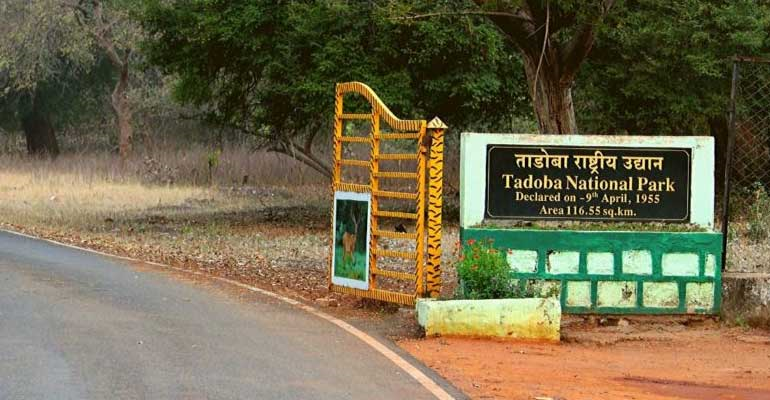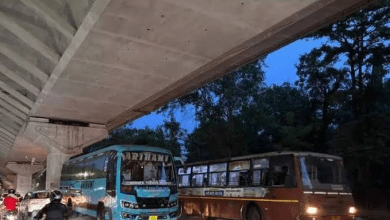
Tadoba Tiger Reserve Expansion: The Tadoba-Andhari Tiger Reserve (TATR), one of India’s most renowned tiger habitats, has grown by an additional 78.79 square kilometers, boosting both the conservation efforts for tigers and addressing the ongoing man-animal conflict in the Chandrapur district. With this expansion, the total core area of the reserve now stands at a vast 704 square kilometers, offering a broader and safer space for the majestic creatures. This article delves into the importance of this expansion, the challenges faced by local communities, and what this means for the future of tiger conservation.
What is the Tadoba-Andhari Tiger Reserve (TATR)?
The Tadoba-Andhari Tiger Reserve, located in Maharashtra, is one of the oldest and most vital wildlife reserves in India. Initially declared a reserve forest in 1879, Tadoba was later designated as a national park in 1955. Over the years, it has played a crucial role in preserving not just tigers but also the entire ecosystem that supports various species of flora and fauna.
The Expansion of TATR: A Significant Move
Maharashtra’s government has finally issued a notification to expand the 625 square kilometer reserve by an additional 78.79 square kilometers, officially named the ‘Extended Andhari Wildlife Sanctuary.’ This strategic move will greatly benefit the increasing tiger population, providing them with a safer and more sustainable habitat.
Why Was This Expansion (Tadoba Tiger Reserve Expansion) Necessary?
TATR’s core area had reached its carrying capacity, with 93 tigers recorded in 2023. With tigers requiring large territories to thrive, the park was reaching its saturation point, creating competition for space. The extension, which adds mixed forests and bamboo clusters, not only increases space but also enhances the habitat for tigers and other wildlife.
The Role of the Extended Area
The additional 78.79 square kilometers consist of the Palasgaon and Shivni forest ranges and a small portion of Karwa village. These regions provide a habitat rich in biodiversity, offering more prey for the tigers such as gaurs (Indian bison) and herbivores. It’s also a region known for its thick bamboo clusters, which are crucial for the herbivorous animals that tigers prey on.
Jungle Safaris in the New Sanctuary Area
Before its formal inclusion in the sanctuary, the Palasgaon forest range was already hosting jungle safaris. With this expansion, these safaris will now offer an even more enriching experience for wildlife enthusiasts, allowing them to witness the diverse ecosystems of the Tadoba reserve.
The Impact on Local Communities
The expansion also affects local villages like Karwa, which have long struggled with the challenges of living in close proximity to a tiger habitat. With their village now included in the sanctuary’s buffer zone, residents are offered a relocation package under the National Tiger Conservation Authority (NTCA) guidelines.
What Does the Relocation Package Offer?
According to NTCA norms, each family (defined as any individual 18 years or older) is eligible for a relocation package of ₹15 lakh, along with compensation for agricultural land. This package gives villagers the option to move voluntarily, reducing the risk of human-tiger conflicts.
Challenges of Relocation
While the offer of relocation seems like a positive step, it isn’t without its challenges. One of the biggest concerns is whether people will accept the resettlement package, as many are attached to their ancestral lands. Furthermore, recent changes in Supreme Court directives now limit the amount of land given in exchange for relocation, which could influence the decision of villagers.
The Importance of Relocation for Tiger Conservation
From a conservation perspective, the relocation of villages like Karwa is crucial. If successful, this would create an inviolate core area, where human presence is eliminated, providing a safer environment for tigers. Currently, only 30 families remain in Rantalodi village, situated on the edge of the reserve. With over 200 families already relocated, the path forward looks promising, but much depends on how the remaining families react to the new offer.
A Brief History of TATR’s Expansion
The journey of the Tadoba reserve, from a shooting block to a protected tiger sanctuary, has been a long one. Here’s a look at the major milestones:
- 1879: Tadoba was declared a reserve forest and was used as a shooting block until 1905, when hunting was restricted.
- 1935: A 45 square kilometer area around Tadoba Lake was declared a sanctuary.
- 1955: Tadoba became a national park.
- 1970s: Hunting blocks were permanently closed.
- 1986: 506 square kilometers were added as Andhari Wildlife Sanctuary.
- 1993: The national park and the wildlife sanctuary were merged to form the Tadoba-Andhari Tiger Reserve (TATR).
The Future of Tiger Conservation in Tadoba
With the core area now expanded to 704 square kilometers, Tadoba is well-positioned to become one of the most successful tiger conservation areas in India. The extended sanctuary will provide much-needed space for the tigers, ensuring the population remains stable and protected from human interference.
How Will the Expansion Affect the Tiger Population?
By increasing the available territory, the park reduces the likelihood of territorial conflicts among tigers. This will support the long-term sustainability of the population, as younger tigers will have access to new areas, reducing the pressure on the older, more established individuals.
A Step in the Right Direction
The expansion of the Tadoba-Andhari Tiger Reserve is a game-changer for tiger conservation in India. By adding 79 square kilometers of prime tiger habitat, the state government has not only ensured the long-term viability of the tiger population but has also taken steps to address the human-tiger conflict. The challenge now lies in ensuring the smooth relocation of villagers and the successful management of the new sanctuary areas. Ultimately, this move strengthens India’s commitment to wildlife conservation, setting a precedent for other reserves facing similar challenges.
- What is the Tadoba-Andhari Tiger Reserve known for? The reserve is known for its dense tiger population and its rich biodiversity, including a variety of flora and fauna, particularly the Indian bison and other herbivores.
- Why was the expansion of TATR necessary? The park had reached its carrying capacity for tigers, and the expansion was necessary to provide additional habitat for these big cats to thrive.
- What does the relocation package for villagers include? The relocation package offers ₹15 lakh per family, along with compensation for agricultural land, to encourage voluntary relocation.
- How will the expansion benefit the tigers? The expansion provides more territory, reducing territorial conflicts and supporting a healthier, more stable tiger population.
- Are there any safaris in the new sanctuary area? Yes, jungle safaris are already operational in the Palasgaon forest, and visitors can expect more enriching experiences following the expansion.









